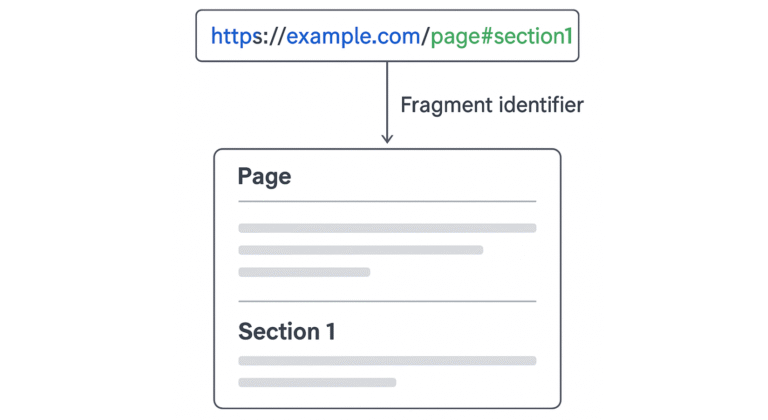Creating a new product in the market is always challenging. It makes businesses sit on the fence about whether to launch their product or not.
Obviously, no businesses want to invest its money in a product that doesn’t give them sustainability and profitability.
Are you worried about how to ensure that your product is worth the effort?
No worries! Here is your profound answer: Minimum viable product (MVP)
It is a launch strategy that helps businesses to create breakthroughs by launching their product with significant features to understand whether their product works wonders in the market or fails to impress its target users.
Some famous brands that validate their product idea using MVP products are Dropbox, Amazon, Foursquare, Zappos, Airbnb, Facebook, etc.
What Is the Minimum Viable Product(MVP)?
In simple terms, MVP development is a process of launching a product with must-have features to grab the eyes of early adopters. Once the feedback is received from them, the next step is to make modifications or improve the product to bridge the gap between user expectations and the product in order to persuade them to love the product.
MVP helps to answer the following questions that will define the success of a product. It includes-
- Is there a demand for the product?
- Is the product capable of solving customer problems?
- Is the product monetized or not?
By dwelling on the above questions, product sustainability can be accessed. It needs to be done because the business’s objective is not only to discover the product but to bring more sales and revenues.
| M=Minimum | V=Viable | P=Product |
| Creating the foundation while utilizing the least effort. | Must-have features that can be adequate for early adopters. | A tangible thing that users can feel and touch. |
MVP is defined as the version of a new product that allows validating the product with crucial features by aligning the expectations of the customers with minimal time and financial losses.
MVP Building Goals
It is necessary to understand the goals before creating any product. MVP in business helps in analyzing the crucial aspect before creating a full-fledged product. Let’s discuss some of the vital MVP factors-
- Product viability testing
- Product development cost-saving
- Quick turnaround time
1. Product viability testing
Do you want to check whether your product idea is effective or not? Or not sure where to start and how to execute? A minimum viable product life cycle is a profound solution that helps you transform your idea into reality and also allows you to check whether your customer is going to like it or not. During the initial phase, you can start with the crucial features that include the basic functionalities.
2. Product development cost saving
MVP business model only focuses on the essential functionalities of a product, which results in minimizing operational expenditures; therefore, you can save budget funds.
3. Quick turnaround time
To build MVP, your team only needs to focus on developing a solution catered to customer problems and requires the minimal integration of features that can significantly minimize money spending and rescue a lot of time.
Benefits of MVP for Businesses
Let’s discuss some of the profound benefits of MVP for businesses
- User Research
Don’t you think if your product reaches your end user faster, it will quickly obtain relevant feedback? Therefore, studying the marketplace needs can seamlessly become easy. Leveraging MVP development in the business helps reduce great losses because if something wrong happens in the project, it’s easy to scrap the project at the initial phase rather than the full-fledged product.
- Meet User expectations effectively
The intuitive benefit of MVP project management is that you work on the customer preferences and test the features to match their expectations.
- Cost-effectiveness
By harnessing the potential of MVP, you can cut down the cost to a great extent. Additionally, it helps to identify the weak side of a product, and after gaining the profit, you can put that money back into modifying and adding new features.
- Attract more investors
With the MVP business model, you can grab your investor’s interest as it creates a “trustable partnership,” as the idea looks vague on paper. After implementing it, build trust in your investor’s mind.
- Reduced development cost
MVP enables you to plan your finances exceptionally well because, during its creation, you can only prioritize its features and functions, which in turn can cut down the expenses for a full-fledged product.
How to Build a Successful MVP?
An MVP product consists of a magnitude of steps, and every step has its own significance. Here is a step-by-step process to develop a successful MVP
Step 1: Market research
- Ensure that your idea must match your target user’s needs.
- You can conduct regular surveys to gain valuable market insights so that you can validate your product idea.
- Keep an eye on your competitors to stand out in your product.
A product may fail if it doesn’t address the right problem of the customer.
Step 2: Envision value addition
- MVP business model ensures the value proposition of the product; you must ask the following questions-
1. What advantages does the new product offer to consumers?
2. How is this going to help them?
3. Why do people buy the product?
- The primary objective of creating the product is to provide value to users.
- Your business needs to outline the users first, then base the minimum viable product on what they require.
The value you provide to your customers is considered the USP of your product.
Step 3: Define user flow
- It emphasizes fundamental activities rather than only focusing on features, such as locating and purchasing goods or managing and receiving orders.
- The importance of user flow also stems from its ability to ensure that nothing is overlooked, from the satisfaction of the potential customers to the future during MVP development.
| User flow | Questions to validate your product |
| Process | How is the user going to use the product? |
| Goal | Why users attract to your product? What’s the USP of your product? |
| Idea | How’s your idea going to meet the needs of your customer’s needs? |
| Value proposition | How will your product add sufficient value to users? |
User flow ensures that your intended audience gets the product that they desire.
Step 4: Craft an MVP features list
- Figure out all the features that MVP needs.
- Arrange all the features according to the necessity. The best way is to categorize them into three groups.
1. Must-have
2. Good to have
3. Not necessarily needed.
- Once you devise all your features into these above categories, selecting the features to build MVP will be easy.
Making a list of all features and grouping them is a proven strategy to hit the right market string.
Step 5: It’s time to launch an MVP
- Once the features have been discovered, it is the stage to launch the minimum viable product.
- In terms of quality, MVP product is equally important as the final product and effectively fulfills customer needs.
The product fails if it doesn’t fulfill the needs of its customers. MVP is equally important as crafting a full-fledged product.
Step 6: Test the MVP
- After the MVP product launch, the team starts gathering user feedback.
- It’s common to receive the product’s cons. Instead of doubt about the product, try to gather all the positive and negative reviews.
- Positive reviews help you know the product’s characteristics that appeal to your users, and negative reviews allow you to work on its shortcomings.
Gather the feedback well to enhance your product features to make it competent to your user needs.
Step 7: Improve MVP
- Based on negative reviews, your team can commence improvising the product to live up to their customer’s expectations.
- The new features that customers wished for when they reviewed your product need to be added and the design can also be altered to make it more user-friendly.
“Build-measure-learn” is a great strategy to make the product more convincing to target users.
5 Big Mistakes Need to Be Avoided During MVP Development
1. Solving the wrong problem
Is your product finding a real-life problem? Do customers really need your product? You need to answer these questions before looking for ways “how to build a minimum viable product.”
2. Not giving importance to prototypes
The biggest mistake you can make is not to focus on prototyping and directly leap into building the MVP. It is the stage to visualize your user experience that will help you to build a great minimum viable product.
3. Not targeting the right audience
You must understand that every customer isn’t well-fit for your product. You need to create your user persona, and according to it, you need to persuade the right audience.
4. Don’t rely on one feedback
There are two types of feedback-quantitative and qualitative. Both are necessary to understand user expectations. Quantitative feedback provides summative feedback, including usability and competitor insights, and computes ROI. On the other hand, Qualitative provides summative and formal information such as design decisions, determining usability issues, and providing the solutions to fix them.
Conclusion: Let’s Build a Successful MVP Product
Building a minimum viable product is always a wise decision rather than creating a full-fledged product as it saves financial losses, minimizes development time, and seamlessly fulfills the user’s needs.
In a Nutshell,
- Do market research before creating the MVP to validate your idea.
- Your product needs to solve your target audience’s problems effectively.
- Determine how much value your product should add to your customers.
- Making a group of must-haves that are not necessarily needed and can be added features help you map your user expectations adeptly.
- Gather positive and negative reviews to make your product more appropriate for your audience.
Do you want to build a successful MVP? Top companies like Gleexa help you to create a viable MVP business model to make your product worth it to stand the competition.





